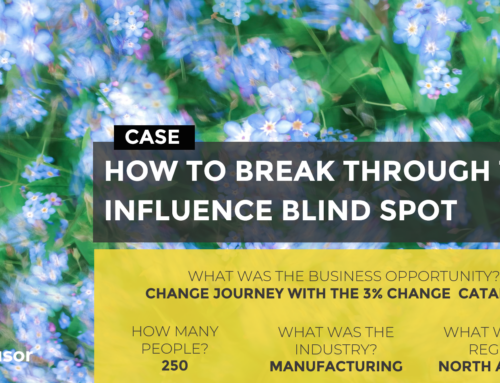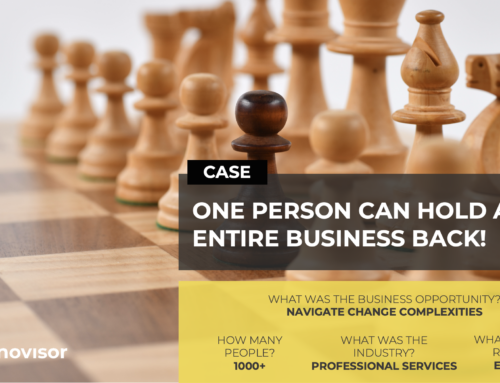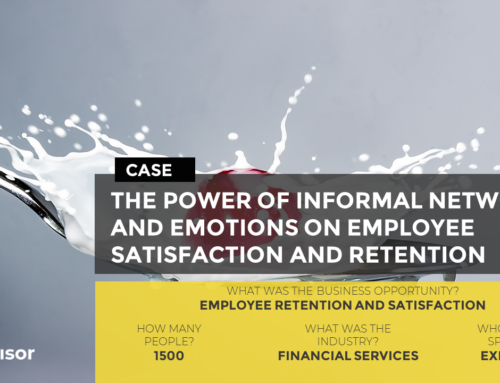
Do You Know Your “Frenchman”?
The largest business unit in an international oil company wanted to transform itself from a silo organization into a matrix organization. Innovation, improved decision making, and organizational agility were the objectives.
It was not only a structural transformation, but also a cultural transformation. People had been made redundant for working across the silos.
A Cultural Transformation
No doubt it was a tough transformation the business unit was facing.
In addition, the unit had a very poor track record of not delivering on its change initiatives. It had always run changes top down, but somehow the organization did not embrace the changes.
The HR-director was the poor guy tasked with making the transformation a success.
Instantly, he knew a totally different approach to change management was required. Firstly, he needed an organizational lens that could make top leadership understand that they did not have complete insight into the organization. He needed facts.
He decided to run a peer-based identification of influence flows within the business unit. Who were the employees sought out for advice? – and who were the employees energizing their surroundings?
The “Frenchman” was the Key Influencer
The facts were surprising. The most influential employee had only been with the company for four months.
It was the “Frenchman”.
The initial reaction from top leadership was that it could not be true. Some even uttered their misbelief by saying “but he is just talking all the time”. The HR-director countered: “Maybe that is what we need?”, and the facts spoke for themselves.
More than sixty people had identified the Frenchman as one of their key influencers.
But how could the “Frenchman” be so influential?
What made the “Frenchman” so influential?
Hence, the HR-director decided to research, how the “Frenchman” had become so influential in only four months. Obviously, the “Frenchman” was likable. He was smiling and he was paying interest to small things in his colleagues work life, but so was other people in the organization.
The key difference between him and everybody else was that when everybody else commuted back and forth between the two offices located a three-hour commute apart, then they were only there for the formal meetings. They rushed out of the meetings, so they could get back to their home base.
The Frenchman did something else. When the formal meetings were over he stayed behind for a couple of hours and socialized with his colleagues. Asked curious questions, and tried to help them with their everyday challenges.
The Most Influential in Only Four Months
This made him the most influential employee within four months. The employee they needed to have on board, if they wanted to succeed in their changes. The employee that had the informal power to ignite or block ANY change. Read more on influence here: What is Your Real Influence?
Knowing the Frenchman enabled top leadership to enter into a dialogue with him and other key influencers. To understand their views, and calibrate their plans and communication, so it embraced their input. To earn their trust and turn them into ambassadors for the organizational transformation.
This is how, the HR-director succeeded in the transformation to a matrix organization.
So my final question is: Do you know the “Frenchman” in your organization?
ORIGINALLY POSTED ON LINKEDIN BY JEPPE HANSGAARD: https://www.linkedin.com/pulse/do-you-know-your-frenchman-jeppe-vilstrup-hansgaard/








